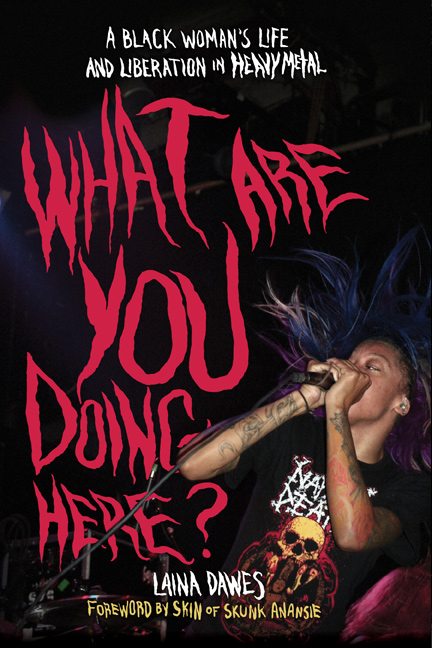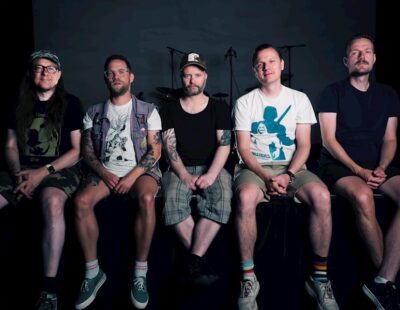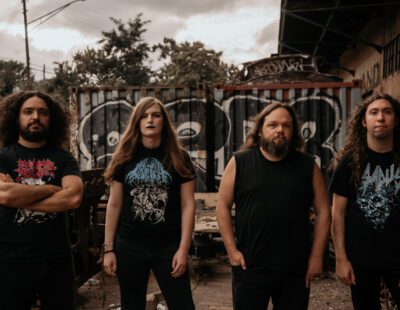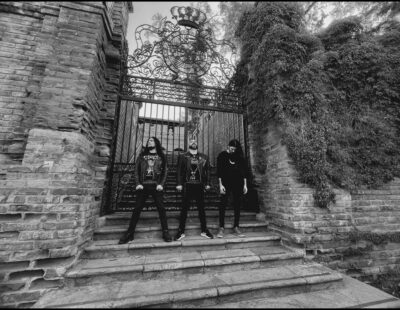
The forthcoming What Are You Doing Here: A Black Woman’s Life and Liberation in Heavy Metal is such an exquisitely rendered, inspiring melange of memoir, cultural criticism, extreme music history, and fiery, righteous polemic it only seemed natural to offer up some Deci-space to author Laina Dawes for a list of five albums the spurred on her musical/intellectual evolution. Predictably, Dawes’ exegesis is both entertaining and edifying…
1. Kiss, Double Platinum (1978)
I’m a bit embarrassed to admit that I loved that horrible made-for-TV movie KISS Meets the Phantom of the Park. All I can remember — I was seven — was that they were scary and that excited me. For my eighth birthday I requested and received their greatest hits double-vinyl, Double Platinum, and I loved it to death. C’mon, “Deuce” was the shit back then! Between my older sister and I, over the years we eventually obtained all of their solo albums, but I was drawn to “Space” Ace Frehley’s one because I liked the guitar work — and it was sonically harder than the schlock found on the other solo albums. A few years ago a fellow music journalist sent me some rare solo stuff that Frehley had done right after he left KISS and it was incredible — dirty, bluesy, groove-oriented hard rock that was ten times better than what the band was producing.
2. Judas Priest, Screaming for Vengeance (1982)
Growing up in rural Eastern Ontario, we didn’t have — and my parents still do not have — cable TV. When I was eleven or twelve, I would go to sleep at 9:30 on a Friday night, get up at midnight and if the reception was good enough, watch this Canadian music program, The New Music on one of the few channels we could get. The show was incredible by today’s standards, as it only focused on ‘alternative’ music: the underground punk scene, new wave, heavy metal and later, rap. I discovered Black Flag, X, Agnostic Front, and during one episode they showed snippets of Judas Priest’s ‘new’ video, “You’ve Got Another Thing Comin.’” I was immediately hooked on the loudness, the leather, K.K Downing, the flashing lights and Rob Halford’s vocals, who sang like I had never heard a singer sing before.
After sourcing what album the song came from via Circus Magazine, I was able to save up enough of my allowance to buy Screaming for Vengeance on vinyl. One of my older brothers is an artist, and he drew the cover art, I colored it in and I think I put it on my bedroom wall — why we did this makes no sense to me now, but we lived way out in the country so I guess we were bored! I now know there are better albums, such as Sad Wings of Destiny, but that album was the one that made me a lifelong Priest fan and really turned me onto harder stuff. And you can’t beat the Halfords’s unhinged wailing on the title track.

3. Mother’s Finest, Black Radio Won’t Play This Record (1992)
Five years before I discovered Mother’s Finest, a hard rock/funk band from Atlanta, I had moved to Toronto to attend college and because there were few black folks in my hometown, I was looking forward to getting immersed in a larger black community. I soon found out that I was not really wanted for a number of reasons — one of them being that I was really into the metal scene, was born in Canada, adopted and perceived as ‘not knowing my roots.’ I saw the single “Cry Baby” on MuchMusic and while the song is a rock ballad, it was one of the first times — “Ghetto Heaven” by the Family Stand was another one — in which I saw black women singing rock music. I was enthralled, as I didn’t yet know about seminal black rock singers like Betty Davis, Nona Hendryx or even Tina Turner’s earlier work with the Ike and Tina Turner Revue. Singer Joyce Kennedy and The Family Stand’s Sandra St. Victor were phenomenal, both musically and visually. Beautiful, sexy and self-assured musicians doing something that I didn’t think black women were allowed to do. I also loved how the black-centric music of funk was electrified through heavy guitars and a powerful bottom end, and while the soulfulness of Kennedy’s voice was steeped in R&B and gospel, it served as a perfect match to the more contemporary hard rock sound.
The title Black Radio Won’t Play This Record was in response to the band’s frustration about their music being labeled as too ‘rock’ to get airplay on black-centric radio stations, despite the fact that black-centric musical genres played a significant roll in the birth of rock music. The lyrical content consisted of some pretty strong commentary about politics, race, social injustice and being economically and socially disenfranchised and trying to survive in the post-Reagan-era America. As a social justice activist, this album serves as not only a blueprint as to what I was feeling in the early 90s as a black, female metal fan, but also solidified how heavy music serves as a perfect accompaniment to lyrics that spoke about the frustration of people — regardless of ethnicity — who were trying to survive during hard times.
4. Sepultura, Roots (1996)
The video for “Roots Bloody Roots” blew my mind. I’d never heard of the band before seeing the video and the imagery — Xavante tribesmen, the capoeira movements and the use of indigenous instruments — were fascinating to me, as I didn’t know about any metal bands from Brazil and knew nothing about the history of the music and culture. I loved how the band merged their cultural heritage within contemporary music, but more importantly this was simply a brootal song and album, and I loved the unbridled passion of Max Cavalera. Along with Mother’s Finest, Living Color and Bad Brains, Sepultura was another reminder of how metal is a perfect accompaniment to the transmission of complicated narratives and that metal music and culture was globally and culturally diverse. This album also got me thinking about all the other music that was being created across the world, and how it serves as documentation, sometimes the only safe method of communicating to the outside world, as to what was going on from a political and social standpoint in other countries and continents.
Slayer, God Hates Us All (2001)
I got it days before 9/11 as a promo, and this was playing on my Walkman as I walked home in a daze from my day job in Toronto’s business district, after the building was vacated for fear of a terrorist threat. Earlier that day I had watched on an American TV station as a plane hit one of the World Trade Center towers. What was the world coming to? God Hates Us All seemed to compliment the rage I felt over the attacks. As I worried if my American friends were safe, the album helped me get through that day and made me think about how the expelling of anger through musical aggression can be liberating and that sometimes, listening to aggressive music is the only method for some to physically and emotionally express their frustration in a way that does not hurt themselves or others. But on the flip side, the full-out fury of that album also served as a premonition to me of the unbridled rage that soon swept across the globe — the creation of wars, the rise of intolerance and right-wing fanaticism and the hate that was displayed towards innocent Muslim communities. It is the listener’s choice in how they perceive music and let it consume them.
Fortunately for me, I chose the former and not the latter.
I know that a number of people believe that this is one of Slayer’s weakest albums, but “Disciple” is one of my favorite songs of all time. God Hates Us All made me a Slayer fan for life, and is an album I regularly listen to when I need to let go of rage.
For more information on What Are You Doing Here visit the book’s official website. Dawes can be found on Facebook, Twitter, and at her own blog, Writing is Fighting.







